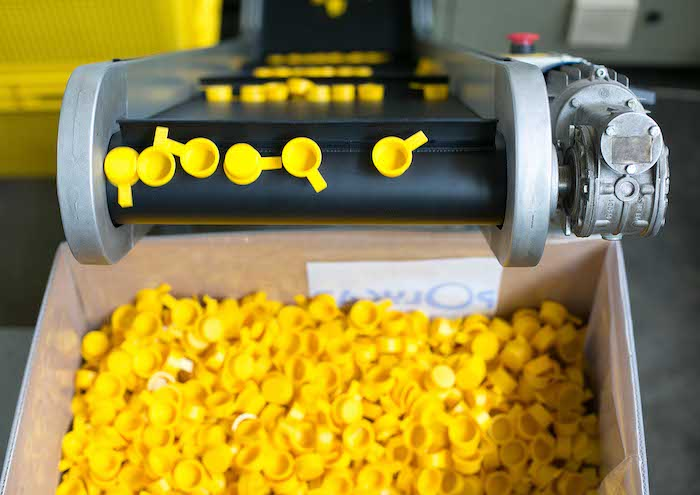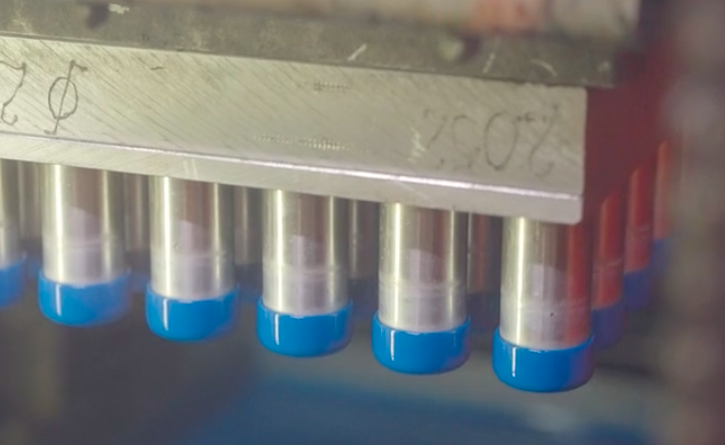Tooling is an integral part of the manufacturing process for nearly all the parts made at Caplugs. Molding tools are devices used to create precise and customized components consistently and at scale, but different tooling is needed for different applications. At Caplugs, we rely on molding tools every day as part of our manufacturing processes, so let’s take a closer look at the different types and uses of tools in this in-depth guide.
In this article, we'll cover the fundamentals of tooling, the different types of molding tools, materials, design considerations and which type of molding to choose. Whether you're new to molded products or looking to add to your existing knowledge, this guide will provide helpful insights.
In the manufacturing space, tooling refers to the precision molding tools used to shape raw materials, such as plastic and vinyl, into specific forms. Broadly speaking, tools are the rigid form that creates the unique shaping, contouring and features that become the final part. Primarily, we will be looking at injection and vinyl dip tooling, although Caplugs also offers compression rubber and extrusion capabilities.

Injection tools receive molten material – in our case, a form of plastic – that is forced into pre-designed mold cavities at high pressure. At Caplugs, injection tools (mold cavities) are made of stainless steel and pair with a mold base. We offer an interchangeable mold base system that works with different inserts, which allows us to create different custom inserts that work with our existing mold bases, saving customers time and money. We produce insert sets or stacks to meet your exact manufacturing needs and can fit the tooling into one of our mold bases, which range in size from single-cavity builds up to 32 cavities.
The part’s size and quantity needed determine the required mold cavitation. For example, because larger injected parts restrict available space, fewer cavities are possible and output is limited. Similarly, for a small quantity, less cavities are required. While other companies might point you toward buying a whole injection molding unit, at Caplugs we produce injection mold inserts, allowing us to reuse mold bases and reduce tooling costs for customers.

Vinyl dip tools are used when dipping a part form into a liquid polymer. At Caplugs, 99% of our dip molding tools are dipped into some sort of vinyl. The frame for dip tooling is made of steel, and then the dip molds – sometimes called stakes – made of lightweight aluminum are attached.
Each frame varies in size, depending on the size of the part to be produced. The frame could include as few as one or as many as 560 stakes. Our engineers work with you to maximize the usable surface area of the dip molding frame so that we can put as many dip mold tools on the frame as possible, cutting down on cost and production time, while optimizing capacity to meet your quantity output demand.
There are many aspects of design that must be considered when evaluating injection molding against dip molding. Each molding process offers different benefits, and the right option is a complex balance of form, function and quantity demand. Let’s look at some of the differences and capabilities to keep in mind when evaluating the purpose, quality and production efficiency of each option.
A primary consideration when choosing injection molding is the configuration and design features needed for your part. One of the major benefits of injection molding is that it is well suited to making parts that have a higher degree of complexity in design. For example, parts that have intricate details or unique shaping requirements can be accommodated with injection tooling. Injection also accommodates higher volume requirements, allowing for rapid manufacture once the tooling is in place, even with smaller or more detailed parts.
When considering dip molding, one of the largest benefits is the rapid pace possible with time to production. Tooling for vinyl dip parts is typically lower cost than injection tooling, and can also be produced more quickly. Dip molded parts also offer versatility, for example, wall thickness for a part can be adjusted by increasing or decreasing the time dipped. Similarly, the same tool can also easily accommodate a range of part lengths by increasing or decreasing the depth at which the tool is placed into the vinyl.
At the end of the day, what type of molding to choose and why comes down to three major driving factors – quantity, material and price.
In terms of quantity, injection molding can produce high quantities with rapid cycle times, creating efficiency for large-scale manufacturing for even detailed parts. Meanwhile, dip molding is a slower process, particularly if multiple dipping and drying cycles are required, meaning it is often used for smaller production runs or products needing specialized coatings. However, for some smaller and/or simpler parts, racks of dip mold tools can produce large quantities in a single run.
If your part needs to be a certain material, that will direct your molding choice immediately. For example, if you needed a HDPE part, you’d go with injection molding, while customers looking for a vinyl part will use dip molding. However, with both approaches, customizations to enhance UV resistance, heat tolerance or static dissipative capabilities are possible with material additives.
Finally, cost is always a concern with any manufacturing need. While injection molding is typically more expensive for the tooling, it tends to be the most cost-effective option for a part over time. By contrast, dip molding offers a lower tooling cost and the tool itself can be produced more quickly, but the per-piece cost for the part itself might be a little more expensive. Injection tooling is most well suited for longer-term, higher-quantity production, whereas dip molding’s simpler tooling allows for more cost-effective short runs or prototyping.
Tooling plays a pivotal role in manufacturing, enabling the creation of intricate and precise components across a wide range of industries. At Caplugs, we know that both injection molding and vinyl dip molding offer unique advantages and challenges, so it's essential to tailor your design considerations to the specific manufacturing process and material being used.
When you work with us, our custom molding process is done fully in house. Customers start by working with a dedicated sales engineer to ensure their part design meets all specifications for form, fit and function. Then our design engineers create the part and the tooling to manufacture your product consistently at scale. Finally, our manufacturing engineers ensure that tool and molding machine performance is optimized to deliver the highest quality parts efficiently at the volume you need.
We hope this comprehensive guide has provided you with valuable insights into the world of tooling and molding. If you have any specific questions or need assistance with injection or vinyl dip molded solutions, don't hesitate to contact our experienced team at Caplugs by using our web chat or by calling 888.CAPLUGS. Our full team is here to support all your manufacturing needs as your partner in product protection.